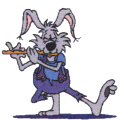
Music Theory & History ~ All about the Flute ~ Performing Advice
Music Psychology ~ Teaching ~ Fun Stuff ~ Mostlywind ~ Links

Click on the Main Categories above to start your adventure.
Below are the Sub-Sections for this category.
[Flute Teaching - Level One] [Flute Teaching - Level Two] [Flute Teaching - level Three]
Following an HMI visit, it was suggested that we be more succinct in our expectations within our department.
Feel free to use and amend the material.
(It would be helpful for me to have feedback if you do choose to use it!)
email: [email protected]
| SCHEME OF WORK: FLUTE
LEVEL 1 (FOUNDATION) |
| KNOWLEDGE OF THE INSTRUMENT
Pupils should be able to show a working knowledge of the following: * How the flute works * Recognition of the main parts of the instrument i.e. Headjoint, Body, Footjoint * The correct way to assemble the flute * Care and maintenance of the flute * Correct posture for playing seated and standing * Know how to tune the flute to the appropriate notes * Understand how the sound is produced * Correct stance and hand positions * Understand the significance of practicing efficiently |
|
TECHNIQUE Pupils should be able to demonstrate the following: * Good embouchure formation * Basic breath control * Ability to start and finish notes in the correct manner * Ability to demonstrate basic articulation i.e. Slurs, staccato, accents etc. * Have a good warm-up technique
based on long notes, designed to develop stamina * Hand position must be correct from the outset, fingers should be curved |
|
SCALES AND ARPEGGIOS Pupils should be able to play from music the following: * Major: C, G, D, A, F, Bb, Eb - one octave * Minor: A, E, D, G harmonic - one octave * Arpeggios: of above keys * Chromatic: on D - one octave * All scales should be played both
tongued and slurred and should demonstrate fluency |
|
REPERTOIRE * Suitable repertoire should be
drawn from recognised sources including tutor books, * Suitable material maybe drawn from the various examination board syllabi. * Pupils should be encouraged to perform from an early stage. * Performances should demonstrate
an understanding of style, phrasing, expression and |
|
THEORY Pupils should be able to
demonstrate a knowledge of music theory relevant * Notation: Stave, bar-lines,
treble clef, leger lines. All treble clef notes within the * Rhythm: Crotchet, quaver, minim
and semibreve and their equivalent rests, * Key signatures: All major and minor
keys with up to three sharps or flats - * Dynamics: pp, p, mp, mf, f, ff, crescendo, diminuendo. * Tempo: Allegro, Andante, Moderato, Rall., Rit. * Articulation: Slur, Staccato * Form: Repeat signs, D.C. al fine |
|
SIGHT READING Pupils should be prepared to play a short piece at sight: * in simple time * in any key, up to and including two sharps or flats * consisting of semibreves, minims, crotchets, quavers, dotted and tied notes * including familiar dynamic and articulation marks |
|
Aural Pupils should be able to: * Clap from memory the rhythm of a
simple melody in duple, triple * Beat time to a melody in duple, triple or quadruple simple time * Sing or play back from memory a simple four note phrase * Recognise a rhythmic or melodic
change to a four bar phrase played twice with the * Complete a simple four bar
phrase by adding two further bars to the first two, |
|
RECOMMENDED BIBLIOGRAPHY Tutor Books: LAYP Flute, Abracadabra Flute, B&H Flute Method Study Book: 125 Easy Classical Studies, Practice makes Perfect |
![]() E-Mail us your Links
E-Mail us your Links ![]()
Please return again soon.
Carole B. Miller
Copyright � 2002 [Mostlywind]. All rights reserved.
Revised: June 24, 2009